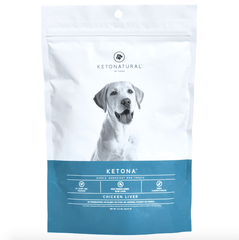Save Money, Save Your Dog.
Join Our Email List For Discounted Pricing and a Free Guide to the Science of Keto Dog Food.
The signs that your dog is actively in pain become more subtle as they age. It's important to note any changes in behavior and schedule an appointment with your veterinarian. After all, you know your senior dog better than anyone!
Here are the top signs that your senior dog is experiencing pain:
- Whimpering or whining
- Restlessness or anxiety
- Heavy panting
- Limping or favoring one side
- Difficulty getting up or using stairs
- Unusually quiet or inactive
- Excessive licking, especially localized
- Changes in appetite, energy, and/or sleep
- Less affectionate or increase in aggression
- Crying or yelping
If any of these warning signs become regular, it is important to schedule a vet visit as soon as possible. If your senior dog is yelping or suddenly acting aggressively by protecting certain bodily areas, you may need to go to an emergency animal clinic.
Just like their human owners, dogs experience aches and pains in their joints as they reach their older years. Prevention is key to lessen the impact that arthritic pain has on their overall mobility.
There are several top ways to naturally reduce pain in your senior dog:
- Regular Massages
- Joint Mobility Supplements (look for glucosamin chondroitin)
- Reduce Weight
- Fish Oil (look for green-lipped mussels)
- Hydrotherapy
Joint and mobility supplements are a powerful, natural way to alleviate mild pain in your senior dog and a common recommendation by vets to start at 6-7 years old. Interested in how to know when your dog needs joint and mobility supplements?
Pop over to our other blog post to read more:
6 Signs Your Dog Needs Joint & Mobility Supplements
Senior, arthritic dogs may have several reasons to be in pain so the best thing you can do as their owner is take steps to find the root cause and have a check up and conversation with your trusted veterinarian.


Related Articles
How to Use Raw Bones for Dental Health Instead of Dental Chews
12 Warning Signs Your Dog is in Pain and How to Help
6 Signs Your Dog Needs Joint & Mobility Supplements
New Year, New You: But What About Your Dog?
Browse Articles By Category